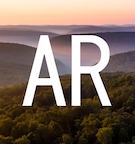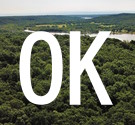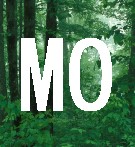Geographical Index > United States > West Virginia > Pendleton County > Report # 25062
(Class B)
Submitted by witness on Monday, November 17, 2008.
Cave explorers recall bizarre experiences while camping in the Seneca Creek Backcountry
(Show Printer-friendly Version)
YEAR: 1994
SEASON: Fall MONTH: November DATE: 5 STATE: West Virginia COUNTY: Pendleton County NEAREST TOWN: Seneca Rocks, 7 miles as crow flies NEAREST ROAD: Rte. 33/55 from Seneca Rocks to Harman OBSERVED: On November 5th, 1994, I and six other cavers got together to do some ridgewalking and camping along several miles of limestone exposed on the east side of Seneca Creek, in the Seneca Creek Back Country. This is a remote and heavily forested section of the Monongahela National Forest, and lies on the western flanks of Spruce Knob, the highest point in West Virginia.
We planned a through hike, so I pre-positioned my vehicle down stream at the public parking area near the intersection of White's Run and Seneca Creek. Then we drove around and upstream to the ****** trail head where we started out. Hiking along or off to the side of the trail we passed the entrances of a few caves that were located on previous trips (we'd been working this area for a few months already). The area is heavily forested with second growth hard woods that have grown up since the virgin timber was clear cut in the 1890-1912 logging era. We worked our way north toward and through a region known for a series of large, open meadows in the forest, left behind by homesteaders in the early part of the 1900s. We eventually found a number of small caves in that area, but none large enough that we could easily enter them (most would require some digging).
About halfway through these meadows we left the trail completely as it wandered up the mountain and away from the limestone. We continued north and across the last of the meadows, then into the trees. We crossed a couple more ravines and finally, at the end of the day, found a nice flat bench on a remote ridge to set up our camp. We were six or seven miles in from the trailhead and still had five miles to go before reaching my SUV at White's Run. It was four miles or so as the crow flies to the nearest houses, on the far side of a big mountain. We were about as remote as you can get in that area.
That night we built a small fire and sat up to about 11 p.m., talking. The night was dark, clear skies but the moon had set, and not much starlight in the thick forest. We all backpack light so our light sources were no more than our head lamps and the firelight. The camp was dim. It was around 10:30 when I had just finished telling something of a spooky story. Everyone was a little keyed up I guess.
About 30 seconds after I finished the story, a single scream rang out from the woods behind me. It sounded to be 200 yards or more north, across the next ravine and on the next ridge we would head for the following morning. It was loud, but not incredibly so. It was unlike any cry I'd ever heard in the woods, and didn't sound like a bird call to me. More like a mammal, reminiscent of a woman's scream (but nothing like a cat's scream). It started low and rose in scale, lasting about 3 to 4 seconds.
It really caught our attention since we were all on edge from the story I'd told. It caused a bit of nervous laughter and discussion, and some of us decided it must have been some kind of screech owl. (I've bought land in that area since then and hear screech owls all the time. They sound nothing like that scream.)
We never heard it again, and by 11 p.m. we were all sacked out. The next morning we got up and decided we had ridgewalked enough. It was Sunday and we had 5 miles of rough terrain to hike before getting to the car, then a long drive home. So we never visited the area from where this sound came. Instead we dropped down off our ridge to the trail following Seneca Creek, and back to my car.
I've not been back to that particular spot since, and would never have thought much more about it. But the event has stuck in my mind for fourteen years. When I found the BFRO website this year, read reports about screams in the night, and then noted how many sitings were occuring within a 10 mile radius of this area, I thought it might be worth mentioning. Certainly not a strong report, but possibly more evidence in the growing collection for that region of Pendleton County. ALSO NOTICED: Nothing else noted at that specific location, but some years later a caver from the same group was with me at another bizarre event. About six miles to the south west of this camp location we found an unknown cave in a remote grazing area. The entrance was partially blocked by breakdown (boulders) but enterable on hands and knees after climbing over the rocks. Just inside the entrance there's a low room with a stream in the floor that flows into passage heading down stream, deeper into the mountain. Blocking our way was the carcass of a large white tail doe. Something had been feeding on the carcass, as the entrails and soft tissue between the rear legs was pulled out or gone. Deer hair was also strewn about the floor and walls of the cave passage. We had to crawl gingerly over the carcass in order to push farther into the cave. It was relatively fresh (maybe a few days old) but odor had begun to kick in. Downstream of the carcass we noticed a red tinge in the water, blood was staining the stream. We had enough then, turned around and left the cave. My friend wretched once we got to the surface. We both wondered what kind kind of animal had the motivation and strength to haul a large doe up and over boulders and through a narrow entrance before stashing it. We assumed either bear or coyote and decided to come back well after the carcass would be gone. We've yet to return. OTHER WITNESSES: Seven cavers all together, we had been sitting around the fire talking, finished with our evening meal. OTHER STORIES: Only the reports on BFRO, but I'm very familiar with the area and can almost pinpoint each of the siting locations by the description alone. TIME AND CONDITIONS: 10:30 p.m. Clear but dark night. Moon had set and heavy forest blocked our the starlight. No houses for miles, only camp fire light to go buy. Clear weather, crisp but not yet cold (by WV standards). ENVIRONMENT: Second growth hard wood forest, approaching 100 years or more in age.
Follow-up investigation report by BFRO Investigator Cathy Betz:
I spoke to DK on the phone and he is certain that what he and his fellow campers heard that night was not a human, a coyote or a panther. He has spent countless hours exploring wilderness areas of different parts of the United States and is acutely familiar with the sounds of many animals.
He described the sound as coming from approximately 200 yards away, lasting between 3-5 seconds and starting with a low pitch and ending with a higher pitch. He had difficulty in comparing it to anything else, but he stated that it sounded somewhat ‘simian’, or perhaps, vaguely like a woman’s scream. He also added that no person could have come close to mimicking the scream. When asked to describe what it sounded like, he replied that it was sort of a ‘Whhooo-aaahhh’ type of vocalization and that in his estimation, whatever produced it must have had considerable lung volume because of the loudness of it.
I also asked him about the deer carcass he and a friend had found cached in a cave in the same vicinity. He described the carcass as being fairly fresh (although odoriferous) and mostly intact except for the soft belly and genital area which had been torn open and which appeared that part of the organs had been consumed. He stated that the carcass appeared to be about three days old, but given the low temperatures, obvious decay had not begun to set in, except for the smell. He did not note which organs were still intact, or missing. He did recall that other than the belly being open, the rest of the deer appeared remarkably intact, except that some of the scruff hair on the back and the neck was missing. And other than the open belly, there were no obvious chew marks or claw marks on the carcass. When asked about the cave itself, he described it as having an entrance approximately 3-4 foot wide by 2-3ft tall, which led to a larger cavity inside. There were some boulders partially obstructing the entrance and the deer had been carried over the boulders to where it was cached. He mentioned that there was a trickle of water, or tiny stream, going from the mouth of the cave to further inside that was tainted with blood, presumably by the deer carcass.
When asked if a large animal, such as a sasquatch, could have fit into the opening, he was certain that it was highly possible. He told me that he is a large man, 6 foot tall, and he was easily able to crawl into the cave.
DK told me that when they heard the scream, and when he found the deer carcass, it did not enter his mind that these things could have been sasquatch related. However, it has always puzzled him as to what could have produced a scream like that, or how and why a deer could have been carried into that cave by the known carnivores in the vicinity. It was only later, after finding the BFRO website and reading some of the reports from the same area, that DK began to realize that the events could be related to a sasquatch.
I found DK to be very reasonable, honest and forthright and do believe that he may very well have heard a sasquatch.
About BFRO Investigator Cathy Betz:
Cathy has been a nurse for over 27 years and currently works in a busy ICU. An amateur naturalist, Cathy has been intrigued by the bigfoot phenomenon from an early age.
Attended the following expeditions:
- The 2006 Florida Expedition
- The 2007 North Carolina Expedition
- The 2008 South Florida Expedition
- The 2008 North Florida Expedition
- The 2009 Central Florida Expedition
- The 2009 Utah Expedition
- The 2010 TN Survey Expedition
- The 2011 East Texas Expedition
-The 2012 North FL Expedition
-The 2013 Michigan Upper Peninsula Expedition
For more information, please see the Florida BFRO
|
























